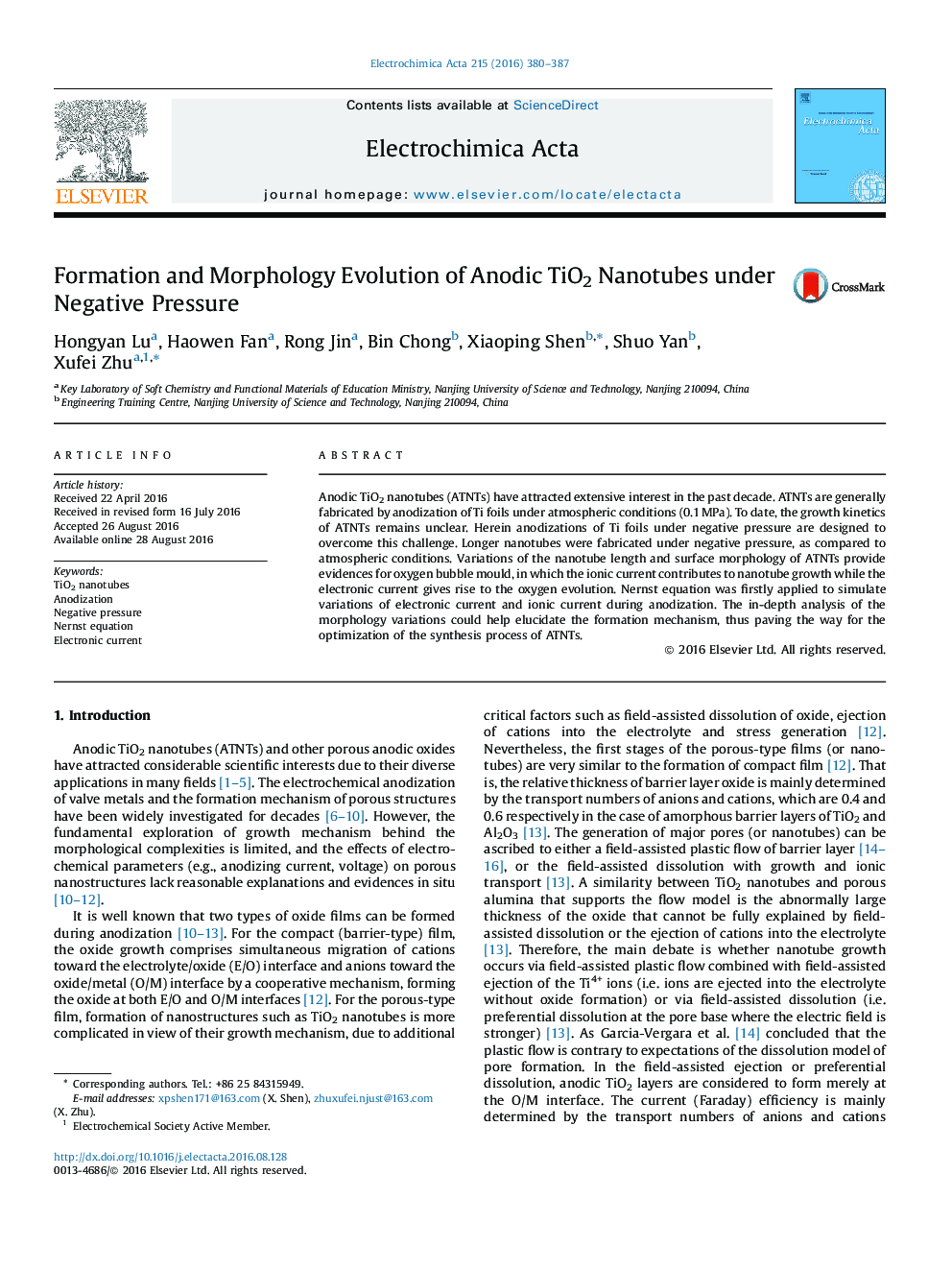| Article ID | Journal | Published Year | Pages | File Type |
|---|---|---|---|---|
| 6473173 | Electrochimica Acta | 2016 | 8 Pages |
â¢Nernst equation is applied to explain electrochemical reactions during anodization.â¢Longer nanotubes were obtained under 0.02 MPa, as compared to atmospheric conditions.â¢The total anodizing current was separated into ionic current and electronic current.â¢Explanation for the particularity of nanotubes obtained under 0.02 MPa is presented.
Anodic TiO2 nanotubes (ATNTs) have attracted extensive interest in the past decade. ATNTs are generally fabricated by anodization of Ti foils under atmospheric conditions (0.1Â MPa). To date, the growth kinetics of ATNTs remains unclear. Herein anodizations of Ti foils under negative pressure are designed to overcome this challenge. Longer nanotubes were fabricated under negative pressure, as compared to atmospheric conditions. Variations of the nanotube length and surface morphology of ATNTs provide evidences for oxygen bubble mould, in which the ionic current contributes to nanotube growth while the electronic current gives rise to the oxygen evolution. Nernst equation was firstly applied to simulate variations of electronic current and ionic current during anodization. The in-depth analysis of the morphology variations could help elucidate the formation mechanism, thus paving the way for the optimization of the synthesis process of ATNTs.
